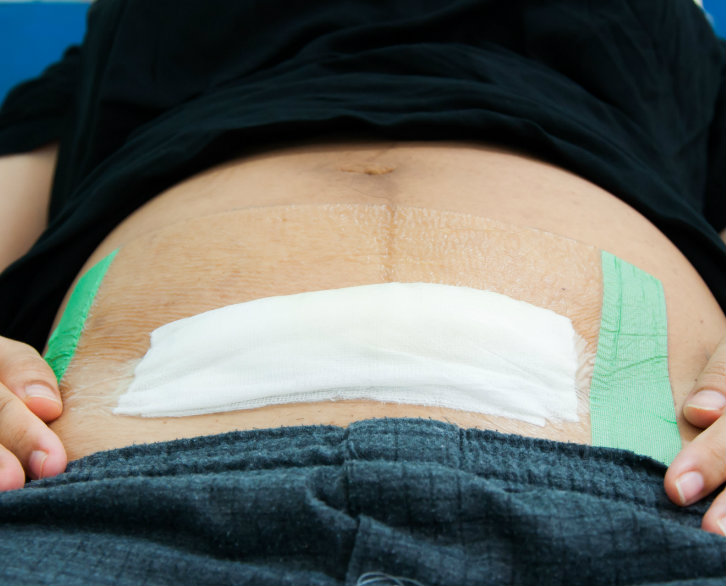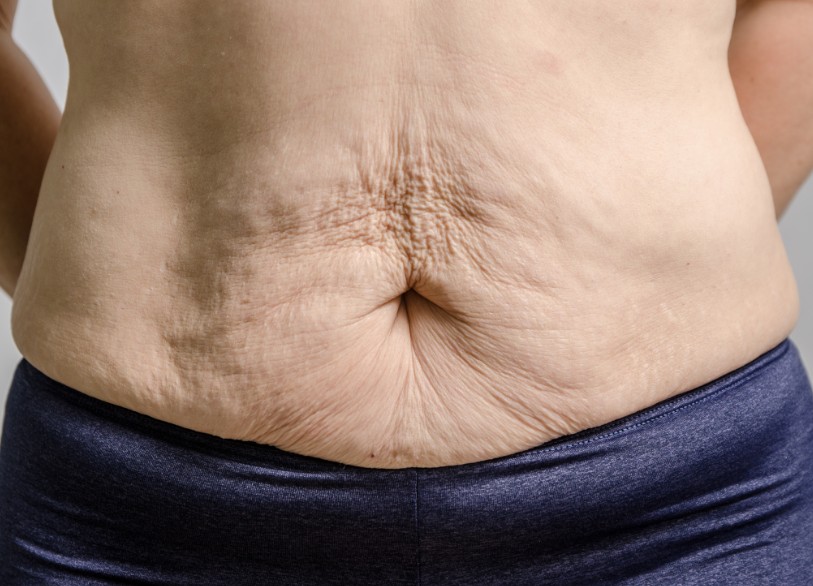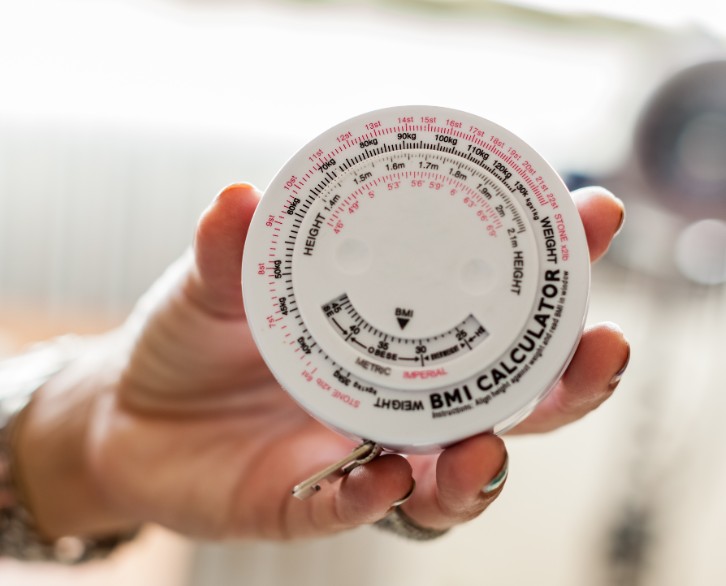
Are you considering a tummy tuck and you want to know what you’ll be looking at in terms of recovery and after-care? Everything from what surgeons actually do during the procedure, to what you need to do to ensure a speedy recovery? Well, the purpose of this guide is to answer all of the questions that you have about the procedure.
What happens during a tummy tuck
A tummy tuck, also called an abdominoplasty, is done under general anesthesia. The doctor makes an incision below the belly button and above the pubic hairline. Weak abdominal muscles are tightened and excess fat and skin is trimmed away — this may require a second incision, depending on the amount of tissue that needs to be removed. The skin from the upper abdomen is stretched down to cover the opening and is sutured to the lower edge of the incision. A smaller incision is made for the belly button, which is then brought through to the surface and fastened into place with stitches.
Your body will now need to heal from one or more incisions, the tightening of your abdominal muscles, and the loss of a good deal of fat and skin. If you have another procedure at the same time — liposuction, for instance — that adds to the list. Your wounds will require patience and care while you recover.
Immediately after surgery
When you wake up after the procedure, you’ll have surgical dressings covering your incisions and there will be one or more small tubes sutured in place to help drain fluid or blood from the surgical site. Expect your nurses to get you up and walking around that first day — it helps prevent the formation of blood clots. Your bed will be positioned to keep your upper body higher than your lower body. You’ll have pain from the surgery, which your doctors and nurses will control with medication. You will probably go home that day, though you may stay overnight depending on the doctor’s recommendation.
The first week at home
Every individual is different, and the most important thing for a patient to do during recovery is to follow the surgeon’s directions. With that in mind, here are some common recommendations:
- You’ll need someone to stay with you for the first 24-48 hours after you get home (and longer if you have children). You’ll be on prescription pain medication for the first few days, which can leave you drowsy, and you may also experience nausea. After your pain subsides somewhat, you’ll switch to acetaminophen.
- Continue to sleep with your head and shoulders raised higher than the rest of your body, and put a pillow under your knees; it takes pressure off the abdomen.
- Walk around your house daily, doing a little more each day. It’s normal to stoop over slightly for a few days until the skin on your abdomen stretches and adapts to its new placement. Don’t push yourself to do more than your surgeon recommends — it won’t help, and it could reopen your wound.
- You’ll experience some bruising, and swelling is a common problem. It can take anywhere from a few weeks to three months to go away completely. You’ll wear a compression garment for about six weeks after surgery, which helps prevent the buildup of fluids and gives you abdominal support while you heal.
- Drink plenty of water to stay hydrated, and don’t worry if you become constipated during the first week – it happens to many patients, especially while on pain medication. Your doctor will probably advise you to have a laxative on hand.
- Care for your incision(s) and drains, and do dressing changes according to your doctor’s instructions. You’ll want to have antibacterial hand soap and antibacterial body wash on hand. Some doctors recommend sponge baths only; others allow you to shower after a few days. Walk-in showers are preferable to bathtub showers because it will be difficult to step over the side of a tub to get in and out.
- Your first follow-up appointment will probably be a week after surgery. The doctor will remove your stitches (if they are not dissolvable) and decide whether to remove the drain(s) or leave them in for a few more days. You’ll see the doctor again several times over the next few months for follow-ups.
Life after your tummy tuck
As you heal, you’ll be able to return to more and more of your regular activity. There are things to be aware of over the next few weeks:
- You won’t be able to return to work (and then only to light duty) for about two weeks.
- No driving for 12-14 days, and then only if you are completely mobile and no longer need prescription pain medicine. You can ride in a car after the first week, but for no more than 30 minutes or so. Between two and four weeks, limit trips to an hour. After six weeks, you can travel for two hours. If you fly, ask for an aisle seat so you can get up and change position when needed.
- You’ll continue to take care of your incision, keeping it clean and using steri-strips to help support it as it heals.
- You’ll continue to increase your level of exercise, either with walking or riding a stationary bicycle. Two to four weeks after surgery, you should be able to exercise for 45-60 minutes a day. After a month, you can use an elliptical trainer or go swimming.
- Be aware that mood changes are normal. You may feel emotional changes between elation — your stomach is flat! — and depression, because recovery is tough, and swelling can keep you from seeing the final results of your surgery for quite a while. Call your doctor if you feel that your mood is significantly lower than you feel it should be.
- If you were a smoker before surgery, you were told to quit for at least four to six weeks before your procedure to increase the quality of your wound recovery. Congratulations! That’s a big step! Take this opportunity to resolve to never go back.
- Recognize that everyone is different when it comes to their goals for a tummy tuck, as well as their recoveries afterward. For example, a mother may have sagging abdominal muscles due to having children (such recoveries are sometimes longer due to the tightening of these muscles), while a middle-aged man may be dealing with a belly bulge but want athletic-looking abs. Or either may desire the surgery after losing a lot of weight. Their bodies and recoveries will be different, so it’s important that their expectations and recovery plans are too.
Three things to keep in mind
This was a big decision on your part, and a long and sometimes painful recovery. Here are three things to remember throughout the entire journey:
- Remember your why: There were reasons that made this surgery important to you. Stay in touch with those reasons, and when you’re having a tough day, remember that you took a brave step toward your goal and that you’re making progress.
- Treat yourself kindly: Part of the quality of your recovery depends on the preparations you made. If you haven’t yet had surgery, think about making or buying some meals ahead of time that you can freeze and simply heat up after your surgery. Go to the library or the bookstore and stock up on a supply of books, magazines and DVDs, and make sure your digital movie-streaming service is paid up. If you have children, arrange to have help with them for a week.
- Call your doctor if anything doesn’t seem right during your recovery. If you aren’t sure your incision is healing properly, or if your pain lasts longer or is more intense than you were told to expect, or if nausea or constipation doesn’t return to normal, just call. It’s easier than worrying. And that’s what your medical team is there for.
Interested in learning more?
In addition to performing all types of gastric weight-loss surgery, Soma Weight Loss in Los Angeles offers tummy tuck procedures to its patients. For more information or to request a free tummy-tuck consultation, click here or call 855-766-2411 (855-SOMA-411).




